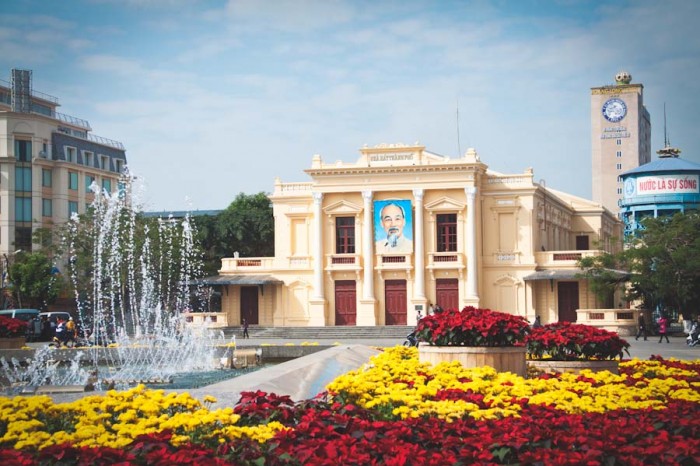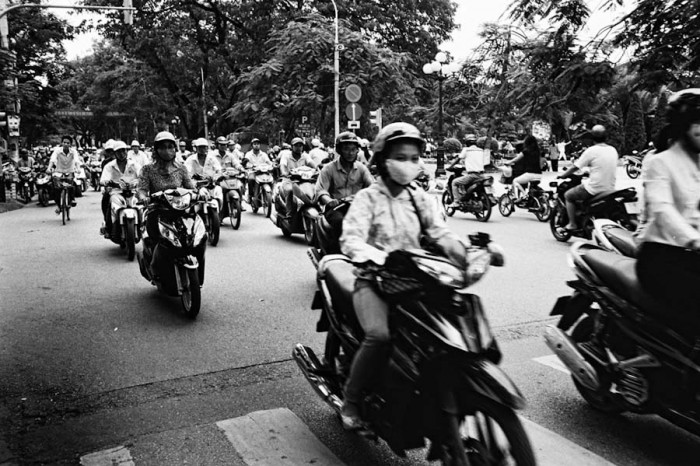On a bus on my way to Haiphong, Seattle’s Vietnamese sister city, I chatted with another young American about our travels. He mentioned that it was his “second tour through Vietnam.”
Forty years ago, a “tour” in Vietnam meant something entirely different for young Americans. In the space of just one generation, the setting of our parents’ defining war is now more synonymous with young globetrotters and affordable backpacking.
In an even shorter period of time, Seattle’s relationship with Vietnam has also transformed.
Seattle and Haiphong’s sister city affiliation stands in stark contrast to the political situation in the early 1990s, when the Greater Seattle Vietnam Association (GSVA) first pursued a Vietnamese sister city. At the time, America maintained a trade embargo against Vietnam, and engagement was still controversial among Seattle’s Vietnam veterans and Vietnamese-American community. The GSVA faced protests, demonstrations, and even death threats.
When President Clinton normalized diplomatic relations with Vietnam in 1995, Seattle was one of the first cities to reach out. Traveling with GSVA representatives, Washington Governor Mike Lowry was the first U.S. governor to visit Vietnam in decades. Finally, in 1998, Haiphong was officially declared Seattle’s 20th sister city, joining cities like Christchurch, New Zealand and Tashkent, Uzbekistan.
Like Seattle, Haiphong is a large port city with an active shipping lane and maritime industry. As Vietnam’s third-largest city, it hosts a thriving culture with art, cuisine, and traditions all its own. Situated right between the capital city of Hanoi and UNESCO World Heritage Site Ha Long Bay, Haiphong is a worthy addition to any Vietnam traveler’s itinerary.
What to see and do:
Most trips to Haiphong begin with the statue of General Le Chan. This 1st-century female general and founder of Haiphong presides over a park just a short walk away from the bus terminal where the majority of visitors arrive.
Remnants of French colonialism abound throughout Haiphong. In the Colonial Quarter, French-style architecture lines the wide avenues of Dien Bien Phu Street and Tran Hung Dao Street.

The French-built Haiphong Opera House is the artistic center of the city. Like the more famous Hanoi Opera House, Haiphong’s hall was modeled on the Palais Garnier in Paris. In 1946, it was the site of the first conflict of the First Indochina war. Legend has it that Viet Minh soldiers and Opera staff armed with antique muskets held off French troops on the Opera House steps for three days and nights.
Today, the Opera House is known for Sino-Vietnamese hat tuong operas, Vietnamese hat cheo dramas, and cai luong folk musicals. Visitors interested in traditional theater can also catch one of the Haiphong Water Puppetry Troupe’s weekly performances.
The city’s oldest structure is the Du Hang Pagoda. This pagoda was built in the 17th century, and has undergone several restorations since.
Temple junkies will also want to visit the Nghe Temple. This temple started as a small shrine to General Le Chan, and has expanded into a significant religious site. As with any place of worship, visitors should dress respectfully and cover their shoulders and knees.
What to Eat:
Haiphong, like Seattle, is known for its seafood. Banh da cua, a clear noodle soup with crab, spinach, onions, and other vegetables, is one of the city’s iconic dishes. Bun ca (vermicelli noodles and fish with green onion, dill, and chili sauce) and nem hai san (seafood spring rolls, often with shrimp, crab, carrot, and mushroom) round out Haiphong’s must-try menu. For the tastiest and cheapest eats, forego sit-down restaurants and head instead to the busiest sidewalk stands you can find.
In addition to Haiphong specialties, standard Vietnamese fare like pho (noodle soup) and banh mi (baguette sandwiches) offer a taste of home to Seattleites familiar with our own city’s Vietnamese cuisine.

What to Drink:
The Haiphong Brewery serves up fresh Bia Hoi daily. Renowned as the best beer in Vietnam, this local brew can be enjoyed with the brewery’s affordable — and surprisingly good — food.
Of course, no Seattleite’s trip to Vietnam is complete without Vietnamese coffee. Coffee is often taken as a dessert in Vietnam, with a substantial layer of sweetened condensed milk on the bottom. Black coffee can be so strong that even those who prefer to omit the sugary goo often add granulated sugar instead.
Coffee topped with a foamy mixture of whipped egg yolk and sugar — or “egg coffee” — is increasingly popular. Coffee lovers in search of a heartier drink can also try Vietnamese coffee mixed with yogurt or dripped over tangy frozen yogurt.
When to go:
The warm, dry months from October to December are the best time to visit northern Vietnam. After that, cold, misty weather sets in until April, followed by the hot, humid monsoon season until September.
Because Vietnam’s northern, central, and southern regions host distinctive climates, finding the right time to travel the entire country can be difficult. Overall, autumn (September to December) or spring (March and April) are the best bets.
Closer to home:
Seattleites need not travel far to experience Vietnamese culture. Seattle hosts several organizations devoted to the Vietnamese-American community, including the Seattle University Vietnamese Association, the Vietnamese Student Association at UW, the Vietnamese Friendship Association, in addition to the GSVA. Check out their websites for more ways to get involved.



The post was awesome and specially the columns were very descriptive and also informative. I personally loved the post.
Hi
there are so many microbreweries with Czech and German beers in Vietnam to visit http://www.beervn.com so do not only drink bia hoi. cheers
A national style museum of 56 nationalities and consisting of mini
villages of various nationalities. At the southeastern part of the country are the
remarkable Con Dao Islands that are teeming with fantastic beaches that
will surely complete your Vietnam tour. I mean to the point that you will never
disrespect yourself or sell your dignity regardless of your circumstances.
Then we still had the sunset to enjoy back on the boat.
Tourists love the area and are flocking there in droves these days, as are the
resort developers. Bright pictures on the stickers for baby clothes allow unmistakably
thing that belongs to him.